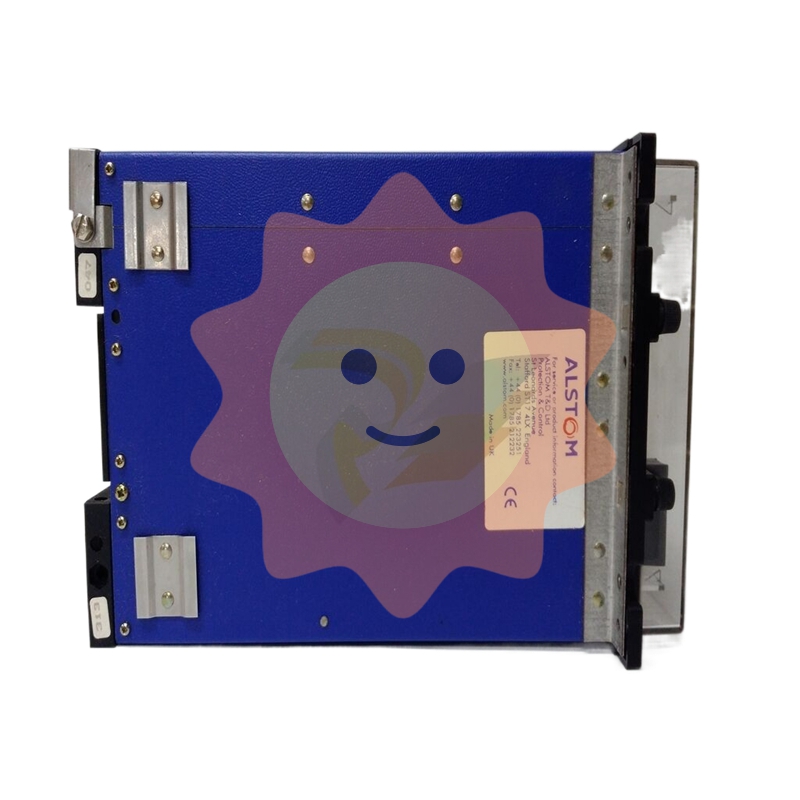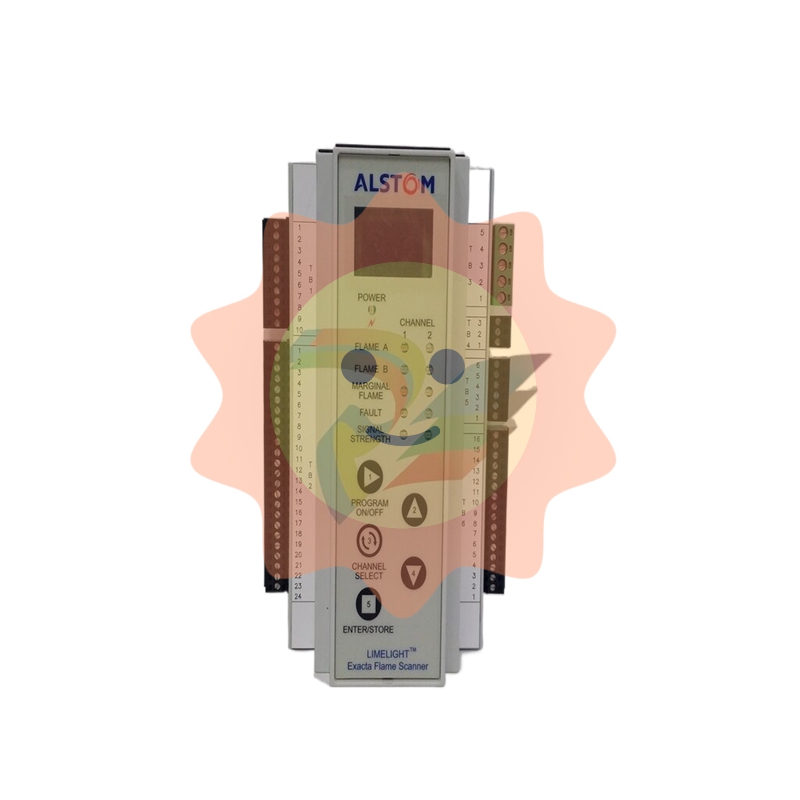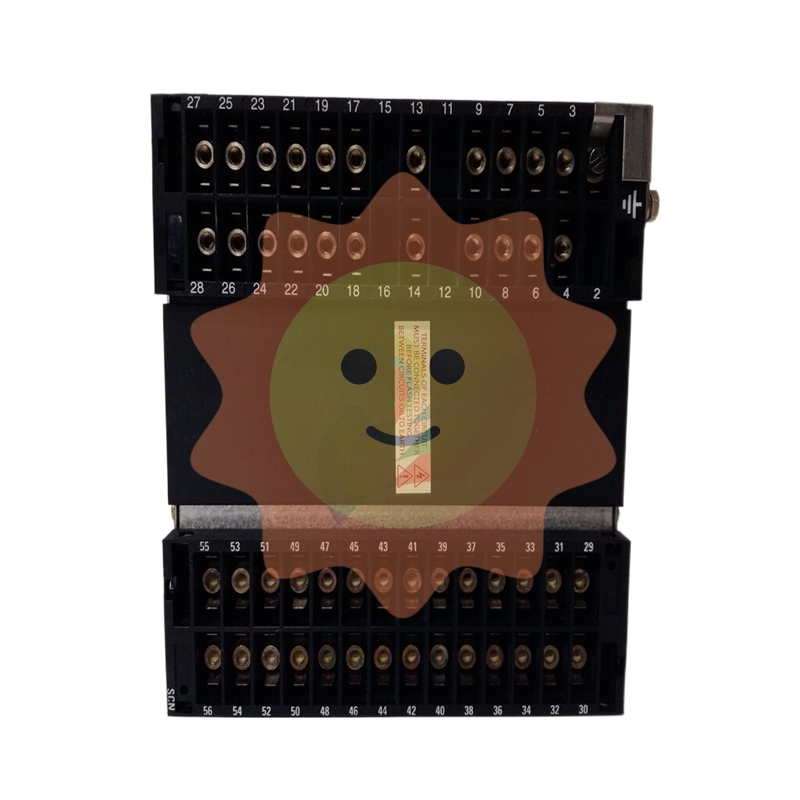The inflection point of prosperity is approaching, and polyester filament should be configured
Forty years of trials and hardships, China has become the world's chemical fiber power. According to the different raw materials, chemical fiber is divided into artificial fiber and synthetic fiber, synthetic chemical fiber accounts for more than 90% of the total output, of which polyester accounts for about 80% of synthetic fiber. China's chemical fiber industry benefited from the transfer of the global chemical fiber industry chain after the 1980s, and became the world's largest polyester production capacity country at the beginning of the new century. Limited by the large dependence on raw materials, China's chemical fiber industry has experienced the improvement of PTA self-sufficiency in the first decade of this century + a large number of ethylene glycol and PX plants have been built in the past decade. As of 2019, China's synthetic fiber production accounted for 70% of the global total sales. Domestic PX, PTA and ethylene glycol sales accounted for 60% of the global total consumption, China has become the world's chemical fiber power. In the profit distribution of filament - garment - brand owner - retailer, filament belongs to the lower link, mainly because of its low entry threshold, the profit is easily suppressed by new entrants. With the further improvement of the self-sufficiency rate of raw materials in China's filament industry chain + regional industrial synergy advantages, there is no need to worry about the outward movement of the industrial chain.
The self-sufficiency rate of upstream raw materials continues to increase, and industry profits are expected to transfer to the polyester end. In the past two decades, the downstream companies in the industrial chain are more dispersed, and their bargaining power is weak. The upstream raw materials represented by PX are mainly controlled by overseas companies, and the industry profits are mostly concentrated in the upstream raw material manufacturers. In recent years, with the gradual improvement of coal chemical technology and the continuous operation of private refineries, the self-sufficiency rate of upstream raw materials has been continuously improved. 2020-2022 will be the peak of domestic PX, PTA and ethylene glycol production capacity, according to our statistics, the capacity growth of PX, PTA and ethylene glycol in the next two years is more than 20%, and the growth rate of polyester fiber is about 10%. When the upstream production capacity of the industry is rapidly released, the supply of raw materials is loose, which is conducive to the transfer of industrial profits to the polyester end.

Vertical extension of integrated layout, horizontal intensive construction cost advantage. For domestic chemical fiber leaders, the main way to expand capacity is in two ways. One is the vertical extension of the industry represented by Rongsheng Petrochemical and Hengyi Petrochemical, expanding upstream refining and chemical projects, forming a whole industry chain model from crude oil to polyester filament integrated layout. The other is the deep cultivation of the middle and lower reaches of chemical fiber represented by Tongkun and New Fengming, concentrating on the PTA-polyester production base in a certain area, intensively expanding the downstream capacity, forming efficient collaboration between PTA and polyester, and further reducing the production cost of each product.
Filament is close to the inflection point of the industry, and demand drives leading companies to benefit significantly. 60% of China's textile and garment industry needs to be in the country, 40% of the overseas part. After the outbreak of the global epidemic, the proportion of direct exports of polyester filament did not increase, and the textile and clothing industry chain mainly benefited indirectly from the export of terminal manufactured goods. Overseas demand for epidemic prevention materials represented by protective clothing broke out, and China's textile exports to the United States and the European Union increased by nearly 30% from April to November 2020. The year-on-year growth rate of domestic clothing retail sales has maintained positive growth for four consecutive months since August. In the case of low base in 2020 + demand recovery in 2021, the growth rate of the demand side in 21 years is expected to be close to 9%, and the filament industry is close to the inflection point. Hengyi Petrochemical, Tongkun shares and new Fengming three companies in 2020 and 2021 are expected to add 2.1 million tons of filament production capacity and 2.5 million tons, accounting for two-thirds of the weight of new capacity that year, industry concentration is expected to further improve, filament leading companies are expected to benefit from capacity expansion + demand recovery.
Investment theme
Report highlights
The development process and industrial chain relationship of chemical fiber industry are reviewed. We believe that after 40 years of development, as of 2019, China's synthetic fiber was 52.79 million tons, accounting for 70% of the global total consumption; In terms of industrial support, the self-sufficiency rates of PX, PTA and ethylene glycol have reached 49%, 100% and 41%, respectively, and the self-sufficiency rates of PX and MEG are still rapidly improving. In the industrial chain relationship, the gross profit margin of polyester filament leading enterprises is significantly lower than that of downstream garment OEM, brand owners and retailers leading enterprises, the main reason behind the spinning business entry barriers are relatively low, capacity construction cycle is short, excess income is easy to lead to a large number of new supply, future outlook, The integration of filament enterprises is rising, the quality requirements of winding heads are increasing, and the cost curve is steepening, which is expected to improve. From the perspective of industrial relocation, the proportion of chemical fiber labor costs continues to be less than 2%, and the supporting requirements for chemical raw materials are high, and there is no power to transfer to Southeast Asia.

The supply and demand of each single product in PX-PTA/ Glycol-polyester industry in chemical fiber industry are sorted out, and the prosperity of polyester filament is close to the inflection point. In the raw material side, 2020-2022 will be the peak of domestic PX, PTA and ethylene glycol production capacity, PX, PTA and ethylene glycol production growth rate of more than 20% in the next two years, polyester fiber growth rate of about 10%, are facing excess problems. That is, PSI-PTA and MEG prices close to the cost operation will become the norm, and the high probability of polyester filament price elasticity and super profits brought about by downstream recovery will be shared by polyester filament enterprises. 60% of China's textile and garment industry demand in the country, 40% of the overseas, domestic clothing retail sales + overseas textile and garment exports year-on-year growth since August has maintained positive growth for four consecutive months, because the inventory pressure is small relative to polyester filament boom with leading spandex prices have continued to rise, polyester filament itself is also off-season is not weak, Therefore, we believe that the prosperity of polyester filament has been close to the inflection point.
Investment logic
Reasonable valuation + prosperity close to the inflection point, actively optimistic about polyester filament investment opportunities. Polyester filament as the main fabric, lag spandex and other small chemical fibers to make price feedback on demand repair, valuation of high safety margin + boom is the key to the polyester filament target investment in 2021, the current downstream textile and apparel industry recovery has become increasingly clear signs of the start of the off-season is not weak price trend indicates that the inflection point is approaching, Therefore, we strongly recommend Tongkun shares and New Fengming.
First, China is already a chemical fiber power, polyester filament as a large single product industry chain status is low
(A) 40 years of trials and hardships, China has become the world's number one chemical fiber power
The full name of chemical fiber chemical fiber refers to natural or artificial synthetic polymer compounds as raw materials, through the preparation of spinning raw liquid, spinning and post-treatment and other processes produced with textile properties of the fiber, is widely used in people's clothing, food, housing and transportation in all aspects. In terms of raw materials, chemical fibers can be divided into man-made fibers and synthetic fibers. Artificial fiber is made of wood, bamboo, pulp, waste cotton yarn and other natural cellulose materials as raw materials, after polycondensation or polycondensation reaction to synthesize organic polymer compounds, products include viscose staple fiber, viscose filament and acetic acid filament; Synthetic fiber with oil, natural gas and coal as raw materials, through the complex chemical reaction synthesis of polymer, commonly used products include polyester, nylon, acrylic, spandex and so on.
The synthetic fiber is also focused on polyester (PET), and in the specific production and processing process, it is processed into fiber grade slices, bottle grade slices and film grade slices according to the needs of different downstream products. The downstream of polyester filament is mainly textile and clothing, a small part of filament is used in the industrial field, and the downstream of bottle and film is mainly in the packaging field. In 2019, according to the statistics of the China Chemical Fiber Industry Association, China's chemical fiber production was 58.27 million tons, synthetic fibers accounted for more than 90%, and polyester production was 47.81 million tons, accounting for 82% of the total fiber production, of which polyester filament production was 37.31 million tons, accounting for 64% of the total chemical fiber production. Generally speaking, the study of chemical fiber industry chain is based on the polyester industry chain, and the future investment opportunities are judged by analyzing the upstream and downstream supply and demand relationship.

After the reform and opening up, China's textile and garment industry has experienced a development process of continuous expansion of horizontal production capacity + vertical and upward extension of the industrial chain. After the 1980s, the global textile industry chain began to transfer to China, enterprises in the southeast coastal area rely on labor costs and manufacturing costs to complete the primary accumulation, cut into the polyester industry, rapid expansion of production capacity, at the beginning of the new century to become the world's first polyester production country. At that time, China's chemical fiber industry is large but not strong, upstream raw materials PTA, ethylene glycol need a large number of imports, industry profits are often cut by the upstream raw material enterprises. In the first decade of this century, a large number of foreign companies and private enterprises invested in the construction of PTA equipment, and PTA import dependence continued to decline. In the past decade, with the gradual maturity of coal chemical process and the rise of civilian refining, the domestic ethylene glycol and PX industries are about to complete the process of continuous improvement of PTA self-sufficiency rate.
After 40 years of development, China's chemical fiber industry has achieved a development process from scratch, from small to large, from large to strong. As of 2019, the total output of synthetic fibers in China was 52.79 million tons, accounting for 70% of the global total consumption; The domestic consumption of upstream raw materials PX, PTA and ethylene glycol accounts for about 60% of global consumption. China has become a veritable global power in the production of chemical fiber industry.
(2) Polyester filament is relatively weak in the industrial chain, and there is no need to worry about the relocation problem
As the largest branch of chemical fiber, filament and natural animal and plant fibers are used as raw materials in the weaving industry. At present, the spinning link Tongkun shares, new Fengming and Hengyi petrochemical three pillars, the woven clothing link Shenzhou International is a dominant, the brand is the coexistence of domestic and foreign brands, retail is single-brand store mode of Taobo lead.
From the perspective of profit distribution of the industrial chain, Tongkun shares, Shenzhou International, Li Ning and Taobo four enterprises as the domestic leaders of various links, the gross profit rate of the 2019 fiscal year is sorted as Li Ning > Taobo > Shenzhou International > Tongkun shares, the net interest rate is sorted as Shenzhou International > Li Ning > Taobo > Shenzhou International > Tongkun shares, and the rate is sorted as Li Ning > Taobo > Shenzhou International > Tongkun shares. Shenzhou International deposits the most abundant net profit rate from the relatively neutral gross profit rate by virtue of scale effect, while Li Ning and Taobo guarantee the relatively neutral net profit rate by high gross profit rate, while Tongkun guarantees the neutral low net profit rate by operating capacity under the condition of low gross profit rate. This means that chemical fiber is currently in the most vulnerable position in the industrial chain.
Filament has a weak position in the textile and garment industry chain, the reason is that its entry barriers are relatively low, and the downstream customers are more dispersed. Taking a 300,000 tons long silk factory as an example, the initial investment of about 1.2 billion yuan and the allocation of 400 workers can form a medium-sized enterprise with an annual income of 200 million yuan, which can generally recover the investment in 10-15 years. As the core components of filament production equipment, stable and high-quality winding heads are basically in the hands of overseas enterprises TMT and Bama AG, but due to the existence of domestic low-end textile demand, excess profits are easy to attract a large number of new entrants using domestic low-end winding heads. In the cost structure of filament, the direct labor costs of filament production continue to account for less than 2%, which is a world away from the 20% of downstream garment OEM enterprises, which means that filament is not a "labor-intensive" industry, there is no sharp impact of rising labor costs after the Lewis turning point, in other words, That is, there is no need to transfer industries to Southeast Asia or the central and western regions of China. At the same time, this means that the core of the competition between filament enterprises lies in the raw material advantage and the sharing of public facilities attached to the scale advantage, and at the same time, the logistics rate optimization and customer stickiness brought about by the location advantage are also key.

Second, industry: upstream supply and demand are loose, which is conducive to the transfer of profits to filament
From the perspective of profit distribution in the industrial chain, in the past two decades, the downstream companies in the industrial chain are relatively dispersed, and the upstream raw materials represented by PX are mainly controlled by overseas companies, and the industry profits are mostly concentrated in the upstream raw material production enterprises. In recent years, as coal chemical technology has gradually improved and private refineries have been put into operation, the self-sufficiency rate of upstream raw materials has been continuously improved, and 2020-2022 will be the peak of domestic PX, PTA and ethylene glycol production capacity. According to our statistics, the capacity growth of PX, PTA and ethylene glycol in the next two years is more than 20%, and the growth rate of polyester fiber is less than 10%. When the production capacity in the upper and middle reaches of the industry is rapidly released, industry profits are expected to be transferred to the downstream polyester end. In addition, the further improvement of the concentration of the polyester industry is also conducive to leading companies in the industry to obtain greater bargaining power.
(1) PX: The refinery enters the peak of production, and the aromatics production capacity is intensively put into operation
PX, whose scientific name is p-xylene, is an important aromatic chemical. It is widely used in the production of terephthalic acid (PTA) and dimethyl terephthalate (DMT) worldwide, and can also be used as a solvent to prepare pharmaceuticals, spices and other daily necessities. PX production process is difficult, the industry access threshold is high, before 2019, China's PX import dependence has been maintained at more than 50%. By the end of 2019, China's PX production capacity was 21.5 million tons, and three barrels of oil accounted for half of the domestic production capacity. From 2015 to 2018, China's PX industry did not put into production, and PX import dependence continued to rise with the compound annual growth rate of domestic apparent consumption of 8%. From the perspective of import source countries, PX imports in Japan and South Korea exceeded 50%, which became the main variable affecting China's PX supply.
After 2019, domestic private refineries have been put into large-scale production, and the domestic PX supply and demand structure has fundamentally changed. The production capacity of refined oil in China tends to be saturated, and the product structure of newly built private refineries is oriented to oil reduction and increase. The olefin end is dominated by ethylene-polyolefin, and the aromatic end is dominated by PX-PTA. In the first half of 2019, Hengli Petrochemical's two production lines totaling 4.5 million tons were put into operation successively, which kicked off the large-scale expansion of PX. In the second half of 2019, Hainan Refining and Chemical Co., LTD. 1 million tons, Hongrun Petrochemical Co., LTD. 600,000 tons, and Liaoyang Petrochemical Co., LTD. 300,000 tons were put into operation successively, and the domestic PX production capacity increased by nearly 50% in 2019. The PX-naphtha spread has fallen from $600 / ton at the beginning of the year to $300 / ton, and some older units in the industry have suffered losses.
In 2020, PX new investment plants are mainly 4 million tons of Zhejiang Petrochemical phase I, 800,000 tons of Quanzhou and 1 million tons of Dongying Chemical plants, with an annual growth rate of nearly 25%. Under the impact of the epidemic, the downstream demand side is not smooth, and the PSI-naphtha price spread remains at a low level. In the first half of next year, there are 4 million tons of Zhejiang petrochemical phase II production capacity is about to be released, and the supply side of the loose situation is difficult to change. From the perspective of the future production pace, Zhejiang Petrochemical will form a certain balance period after the second phase of production, and PX prices are expected to rise with the recovery of the industry boom. 2022 will be a big year for production capacity, with nearly 10 million tons of new capacity added throughout the year.
The PTA price spread throughout the year remained near 600 yuan/ton, which was significantly improved from 400 yuan/ton at the beginning of the year, and enterprises with cost advantages were able to maintain better profits. Looking forward to 2021, with the production of the second phase PX project of Quanzhou and Zhejiang Petrochemical, PX is expected to remain in a loose state of supply, and the PTA price spread is still expected to maintain the state of 2020 under the background of the recovery of downstream polyester demand.

(3) Ethylene glycol: The logic of continued import substitution remains, and supply and demand are loose in the next two years
Ethylene glycol, or MEG, is a colorless, sweet liquid. As a very important bulk industrial product, it should be widely used in polyester synthesis, antifreeze, solvent manufacturing and other fields, of which polyester demand accounts for 93% of China's glycol demand. In 2019, the apparent consumption of ethylene glycol in China was 18.08 million tons, the domestic production was 8.15 million tons, and the import dependence was 55%. Long time dimension, the domestic ethylene glycol industry has been taking the import substitution logic, the next two years is expected to have a large number of domestic production capacity release, the localization rate is expected to further improve.
According to the different raw materials, ethylene glycol production process is generally divided into oil method and coal method. The oil production process can be divided into naphtha feedstock process and ethylene feedstock process, both of which are ethylene oxide to ethylene oxide and rehydration to produce ethylene glycol. Naphtha raw material method is the main technology adopted at home and abroad. Its development time is long and the technology is mature, but its disadvantage is high energy consumption and high cost.
Coal production method is a special technology developed in China according to the resource characteristics of "lack of oil, less gas and rich coal". The advantage is that the industrial process is short and the energy consumption is low, and the coal production method with neutral oil price has the cost advantage. The disadvantage is that the development time is short, the technical storage is not perfect, the ethylene glycol produced by the coal process will have the presence of carbonyl, conjugate double bond complex organic compound impurities, which directly affects the ultraviolet light transmission of ethylene glycol, and can not meet the requirements of high standard polyester use, and many times can only be used in accordance with a certain proportion of oil to ethylene glycol. After the new coronavirus outbreak, naphtha prices fell sharply, domestic coal prices are still strong, naphtha ethylene glycol has more cost-effective advantages, in addition to individual coal chemical enterprises with cost advantages, coal processing enterprises have a large proportion of losses, which is also the main reason for the decline in the operating rate of coal processing.
On the supply side, in 2020 and 2021, there will be an intensive annual production capacity of more than 6 million tons, mostly based on coal production. In the next two years, the ethylene glycol industry is expected to fall into a loose supply state, the downstream polyester growth rate is difficult to match, and the high inventory at the port will also become the main factor restricting the price rise. On the demand side, with the acceleration of vaccine research and development, overseas markets are expected to gradually return to normal life, and the filament industry is close to the industry inflection point. Ethylene glycol prices are expected to rise with the price of filament shocks stronger, but limited by the industry itself supply and demand, it is expected that ethylene glycol prices close to the cost of operation will become the norm.
Third, the company: large-scale, intensive expansion, turning point to the giant has significant advantages
(A) vertical extension of the integrated layout, horizontal intensive construction cost advantages
After 2016, the chemical fiber industry returned to the boom cycle, and the state further supported the investment and construction of refining and chemical production capacity of private enterprises, and the industry entered a new stage of development. For domestic chemical fiber leading enterprises, capacity expansion is mainly carried out in two ways. One is the vertical extension of the industry represented by Rongsheng Petrochemical and Hengyi Petrochemical, expanding upstream refining and chemical projects, forming a whole industry chain model from crude oil to polyester filament integrated layout. The other is the deep cultivation of the middle and lower reaches of chemical fiber represented by Tongkun and New Fengming, which concentrates on the PTA-polyester production base in a certain area or even in the same park, intensifies the expansion of downstream production capacity, forms efficient collaboration between PTA and polyester, and further reduces the production cost of each product. Hengli Group has both, not only the first to invest in the construction of Dalian Changxing Island 20 million tons of refining and chemical project, but also large-scale expansion of polyester production capacity across the country.

For enterprises with vertical expansion of the industrial chain, the advantage is that after the completion of the refinery project, the whole industrial chain layout from oil to textile and clothing terminal consumer goods can be formed, extending the enterprise's ability to resist risks, and effectively achieving profit horizontal shift within the enterprise. What is challenging is that the investment scale of a single refinery is huge, and the investment scale of a 20-million-ton refinery is between 80-100 billion yuan, which is a huge test for corporate cash flow and financing ability. After the project is completed and operated, the high financial costs and depreciation costs are also factors that cannot be ignored.
In 2019, Hengli Petrochemical, Hengyi Brunei Phase I and Zhejiang Petrochemical phase I refineries have been put into operation, the PX self-supply rate of domestic chemical fiber leading enterprises has rapidly increased, and in the next few years, there are Zhejiang Petrochemical Phase II, Shenghong Petrochemical and Hengyi Brunei Phase II projects have been put into operation, and the situation that core raw materials are subject to overseas enterprises will no longer exist.
For Tongkun and New Fengming, which focus on the main business of filament itself, in addition to Tongkun's participation in 20% of the 40 million tons of Zhejiang Petrochemical refinery, efforts to ensure the advantages of polyester fiber field is its main development direction. Tongkun Group in Jiangsu Rudongyangshan Port invested 20 billion yuan to build 5 million tons of PTA and 2.4 million tons of polyester fiber, vigorously expand polyester fiber production capacity; New Fengming in the existing Zhejiang Dushan port base and Zhouquan base of 4 million tons of PTA and 2.1 million tons of differentiated functional fiber projects and 3.3 million tons of polyester projects.
The advantage of expanding the new production line at the same base is that the upstream and downstream synergies are obvious, and the cost side can save a lot of costs. First of all, the freight cost of PTA purchased by enterprises can be saved, and the same factory can be transported directly through pipelines; Secondly, the temperature after PTA output is about 150 degrees Celsius, the export sales need to be cooled to room temperature, aggregate production directly through the pipeline to the filament device into the polymerization reaction, pipeline transportation can save energy consumption and packaging costs; In addition, the PTA manufacturing process can generate electricity, the process of producing filament requires a lot of power consumption, and the electricity emitted by PTA is directly used for filament polymerization, saving a lot of purchased electricity costs. Finally, public facilities are shared in the same factory, and centralized management of personnel saves a lot of management costs than scattered factories.
(2) The filament is close to the inflection point of the industry, and the demand side drives the leading companies to benefit significantly
60% of the demand in China's textile and garment industry chain is domestic, and 40% is used for export. The year-on-year growth rate of domestic apparel retail sales has been positive for four consecutive months since August, and exports of textiles have been driven by epidemic prevention materials such as protective clothing, and the cumulative growth rate of exports has been more than 20% for seven consecutive months since May. After the continuous de-stocking of filament enterprises in April and May, the current level is basically in a normal range, and the overall demand is in a state of gradual recovery.
In 2019, China exported 2.68 million tons of polyester filament, accounting for 7% of the total domestic polyester filament production. In April and May this year, the export volume fell sharply year-on-year, and then with the overall domestic exports returned to normal, as of the end of November, a total of 2.406 million tons of polyester filament were exported in November this year, a decrease of 32,000 tons from the same period last year. Filament direct export has not directly benefited, this is because filament as a raw material for textile and clothing, China's main export destination for Turkey, Brazil, Egypt and other industrial countries that need to be processed again. In terms of manufactured goods, China's textile exports to the United States in the first 11 months were 47 billion US dollars, an increase of 19%, excluding Q1 China's abnormal epidemic impact, April-November exports to the United States textile growth rate of 33%; China's textile exports to the EU in the first 11 months of 47.4 billion US dollars, an increase of 14%, April to November exports to the EU textile growth rate of 26%, the growth rate is slightly worse than the United States. China's chemical fiber industry chain ultimately benefits from downstream terminal products.

In the short term, it is difficult for the new coronavirus vaccine to fully cover the entire population in the short term, and it is difficult for the overseas supply side to return to normal in the short term due to the impact of the epidemic. On the basis of large subsidies to the cash flow of the European and American governments, China's textile and garment industry chain will also fully benefit from the recovery of global demand. In the medium and long term, the epidemic will eventually improve, and the marginal upward demand for textile clothing is expected to usher in an inflection point in the industry.
From the existing production capacity, China's polyester production capacity in 2020 is 67.13 million tons, and it is expected to increase by 616 and 6.45 million tons in 2020 and 2021, respectively, with a year-on-year increase of 10% and 9.6%. Corresponding to the company, Hengyi Petrochemical, Tongkun shares and new Fengming added 195, 500 and 600,000 tons of polyester production capacity in 2020, as of now, the three companies have 980, 740 and 5 million tons of polyester production capacity, ranking among the top three in China.
From the perspective of polyester filament end, the industry leader is the main force of new production capacity in the next few years. Hengyi Petrochemical, Tongkun shares and new Fengming this year, respectively, the new investment of 100, 500,000 and 600,000 capacity, accounting for 67% of the country's new production capacity, the industry capacity growth rate of about 7.9%; In 2021, the three are expected to put into production 2.5 million tons of filament production capacity, accounting for 66% of the country's new production capacity, and the industry capacity growth rate is expected to be 8.9%.
2015-2019 polyester filament demand compound growth rate of 6%, 2020 January-November apparent demand growth rate fell to 3%, looking forward to 2021, demand growth is expected to fall between 4%-9%, considering the economic repair driven demand recovery and low base reasons, the growth rate is expected to be close to 9%, It is expected that the supply and demand relationship of filament will tend to improve next year.
From the perspective of the industrial chain itself, polyester filament upstream raw materials PX, PTA and ethylene glycol in the next two years, the new production capacity growth rate of more than 20%, more than polyester growth rate of 10 percentage points, the entire chemical fiber plate profit is conducive to the transfer of polyester end. From the perspective of the whole chemical fiber industry chain, with the continuous improvement of PX self-sufficiency rate of upstream raw materials, China's chemical fiber industry will realize the complete localization process of PX-PTA/ ethylene glycol - polyester filament filament - textile and clothing terminal products. Industry leaders can rely on integration and scale advantages into a global competitive advantage, China's chemical fiber industry is expected to dominate the global textile and garment raw materials market.
- EMERSON
- Honeywell
- CTI
- Rolls-Royce
- General Electric
- Woodward
- Yaskawa
- xYCOM
- Motorola
- Siemens
- Rockwell
- ABB
- B&R
- HIMA
- Construction site
- electricity
- Automobile market
- PLC
- DCS
- Motor drivers
- VSD
- Implications
- cement
- CO2
- CEM
- methane
- Artificial intelligence
- Titanic
- Solar energy
- Hydrogen fuel cell
- Hydrogen and fuel cells
- Hydrogen and oxygen fuel cells
- tyre
- Chemical fiber
- dynamo
- corpuscle
- Pulp and paper
- printing
- fossil
- FANUC
- Food and beverage
- Life science
- Sewage treatment
- Personal care
- electricity
- boats
- infrastructure
- Automobile industry
- metallurgy
- Nuclear power generation
- Geothermal power generation
- Water and wastewater
- Infrastructure construction
- Mine hazard
- steel
- papermaking
- Natural gas industry
- Infrastructure construction
- Power and energy
- Rubber and plastic
- Renewable energy
- pharmacy
- mining
- Plastic industry
- Schneider
- Kongsberg
- NI
- Wind energy
- International petroleum
- International new energy network
- gas
- WATLOW
- ProSoft
- SEW
- wind
- ADVANCED
- Reliance
- YOKOGAWA
- TRICONEX
- FOXBORO
- METSO
- MAN
- Advantest
- ADVANCED
- ALSTOM
- Control Wave
- AB
- AMAT
- STUDER
- KONGSBERG
- MOTOROLA
- DANAHER MOTION
- Bentley
- Galil
- EATON
- MOLEX
- Triconex
- DEIF
- B&W


email:1583694102@qq.com
wang@kongjiangauto.com

















































